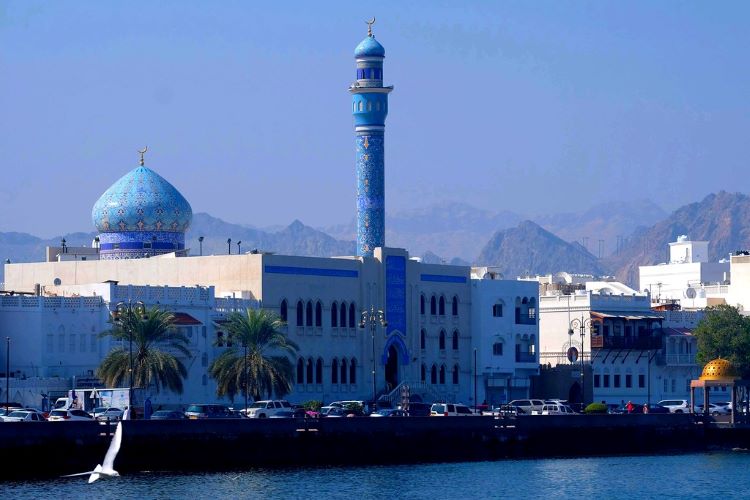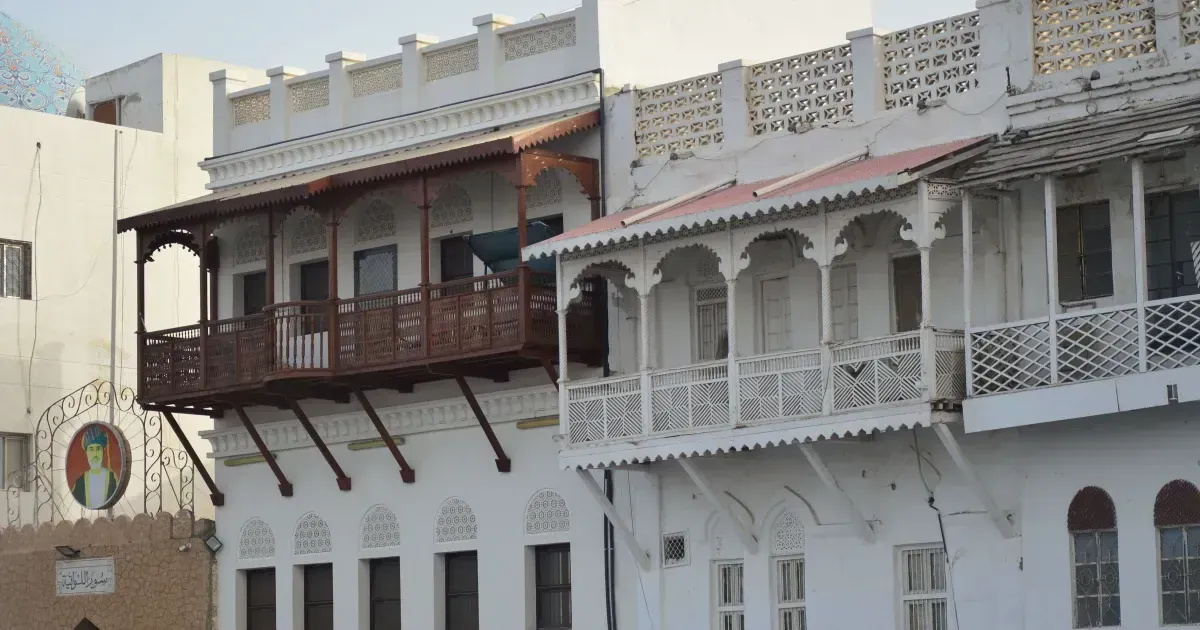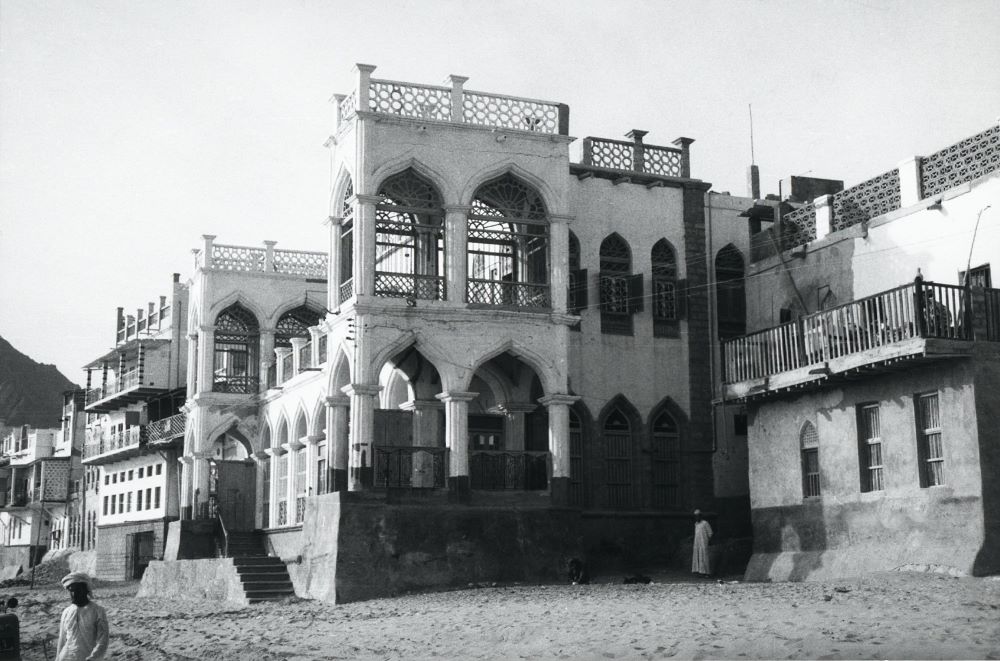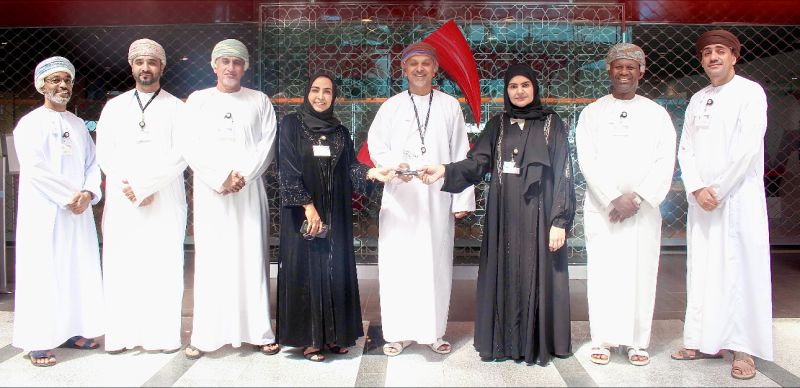
Study of funerary architecture and written artefacts of the Lawatiya Shiʿi merchant community sheds light on their mobility and settlement in Oman from Sindh and Gujarat
Mobility and Material Heritage of the Lawatiya
Zahir Bhalloo
The complex mobility and settlement of communities from South Asia in the Arabian Peninsula before the discovery of oil in the twentieth century is often studied from the perspective of the administrative paperwork produced by former colonial powers preserved today in state archives. While the insight provided by such archival sources is significant, recent research has sought to decenter the state perspective by studying the material (architecture, written artefacts) and non-material (linguistic, ritual) heritage of the mobile actors themselves, or, more accurately, their descendants. In an ideal situation, such research should be multi-sited considering both the point of departure of the mobile actors in South Asia and their place of arrival and settlement in the Arabian Peninsula. In most cases, however, including in this article, the focus is on studying the mobile communities either at their point of departure or arrival. Paul Bonnenfant, for example, focusing on the point of arrival, suggests that the Indic elements in the vernacular architecture of the town of Zabid on Yemen’s western coastal plain can be explained by the historic settlement in Zabid of Indians from Sindh, today a province of southeastern Pakistan, and the neighboring western state of Gujarat in India. Olly Akkerman’s recent study, focusing on the point of departure, has shown that the Arabic manuscript culture of the ʿAlawi Bohra Ismaʿili Shiʿi community in Vadodara (Baroda), Gujarat, was shaped by the mobility of Bohra traders, scholars and students between Gujarat and Yemen and their settlement in these places.
In the present article, focusing on the point of arrival, I examine how the funerary architecture (graves) and written artefacts (gravestones, commercial registers, and documents) of the Lawatiya Shiʿi merchant community sheds light on their mobility and settlement in Oman from Sindh and Gujarat. Before examining the material heritage of the Lawatiya, however, in what follows, I provide an overview of how the Lawatiya presence in Oman is understood today from three different perspectives. The first perspective is from nineteenth and twentieth century British colonial sources, the second has emerged from within the Lawatiya community itself, and the third is from two closely related groups from Sindh and Gujarat which formed diaspora mercantile communities across the Western Indian Ocean during the nineteenth century, the Nizari Ismaʿili or Aga Khani Khojas and the Twelver or Ithna ʿAshari Khojas.

Lawatiya, Khoja, Hyderabadi
The Lawatiya community is today one of the most powerful socioeconomic groups in Oman and in the wider Gulf region. The exact numbers of individuals belonging to the community is unknown but is estimated at fifteen to twenty thousand. Unlike most of the Omani population, which is either Ibadhi or Sunni, the Lawatiya are Twelver or Imami Shiʿis. The precise origins and settlement of the Lawatiya community in Oman is difficult to reconstruct today. The fact that the community is known by three different names, Lawatiya, Khoja and Hyderabadi, is an indication of its entangled past.
The Lawatiya, also referred to as Hyderabadi, are seen as identical to the Khoja merchant caste found in Sindh, Gujarat, Bombay
In British colonial sources from the nineteenth and twentieth centuries, the Lawatiya, also referred to as Hyderabadi, are seen as identical to the Khoja merchant caste found in Sindh, Gujarat, Bombay, and elsewhere across the Western Indian Ocean littoral. The Lawatiya are conceived of in these sources as a South Asian Khoja diaspora that settled in Oman from Sindh, Kutch, and Kathiawar. The walled quarter that the Lawatiya occupied in Matrah, today a suburb of Muscat, known locally as Sur al-Lawatiya, is referred to in British sources as the “Khoja Fort”. This emphasis on a Khoja identification in the colonial sources for the Lawatiya was not accidental. The British consular authorities were keen to establish their protection over all Lawatiya traders who had migrated to Oman after the British conquest of Sindh in 1843 as British Khoja subjects. This protection, as in the case of Sindhi and Gujarati Hindu merchants, gave the British strategic influence not only across the Omani coastal zone, but also in the Trucial states, in Baluchistan and southern Iran where Lawatiya merchants had also settled. Not surprisingly, after mentioning how the Khojas of the region were known locally as Lawatiya and Hyderabadi, Lorimer’s Gazetteer of the Persian Gulf, Oman, and Central Arabia (1908), meticulously records their geographic distribution, including their ownership of land and property. Most British protected Lawatiya subjects in turn, chose to explicitly identify themselves as Khojas in their communication with the British colonial authorities.
The British colonial understanding of the Lawatiya as a South Asian Khoja trading diaspora in Oman and the Gulf has been challenged more recently by some of the Lawatiya. In the 1970s, a member of the Lawatiya community, Jawad al-Khaburi (1912-1984), also known as Jawad Muscati, traced the origins of the Lawatiya to the Arab Ismaili emirate of Multan (tenth-eleventh centuries). This emirate was founded by descendants of a certain Sama b. Luʾayy who had settled from the Hijaz in Oman. His descendants were known in Multan as the Banu Munabbih and the Banu Sama. According to this construction, the Lawatiya were descended from the Banu Sama in Multan who later settled in Sindh where they adopted Sindhi names, language, and customs before ultimately returning to their homeland, Oman, in separate waves of migration, the most recent being via the city of Hyderabad, Sindh. The Lawatiya or Hyderabadis as they came to be known are thus conceived of by al-Khaburi as an Omani Arab diaspora in South Asia which later returned to Oman. This construction of the trajectory of the mobility of the Lawatiya provides a remarkably similar South Asian equivalent to the return to Oman of an Omani Arab diaspora from Zanzibar and East Africa. This was perhaps not accidental and can be seen as part of the nation building efforts following the arrival of Sultan Qaboos to power in 1970.

Al-Khaburi, however, also added a new layer of complexity by suggesting that the Arab origin Lawatiya lineages that returned to Oman initially lived in the Sur al-Lawatiya alongside a few Khoja lineages of Indian origin that had also migrated to Oman from Sindh and Gujarat. The latter, however, were expelled from Sur al-Lawatiya after they recognized the religious authority of Hasan ʿAli Shah Mahallati (1804-1881), Aga Khan I, as a Nizari Ismaili Imam in the mid-nineteenth century. In brief, therefore, the Lawatiya or Khojas of Arab origin, were not the same as the Khojas of Indian origin as reflected in the way the term Khoja was used in British colonial sources. According to al-Khaburi, the Arab origin Lawatiya lineages from Sindh rejected the authority of Aga Khan I and identified themselves as Twelver or Imami Shiʿis. While the quest for a patrilineal Arab descent within the Lawatiya community can be traced at least as far back as the 1940s, al-Khaburi’s Banu Sama construction of Arab origins for the Lawatiya is the first to have received, at least outwardly, wider acceptance within some sections of the Lawatiya community today. This process has gained pace following the publication of a recension of al-Khaburi’s text and its dissemination within the community. More recently a doctoral thesis written by an Egyptian author based on al-Khaburi’s construction and several popular works all of which reaffirm al-Khaburi’s Banu Sama hypothesis have also been published.

In addition to the representation of the Lawatiya in British colonial archival sources and Jawad al-Khaburi’s construction of their origins, the Nizari Ismaili or Aga Khani Khojas and the Ithna Ashari or Twelver Khojas of South Asia also preserve their own oral traditions regarding the Khojas that settled in Oman and the Gulf. The term Lawatiya and Hyderabadi is hardly known among the Aga Khani Khoja and Twelver Khoja communities. The Lawatiya are generally referred to within these communities as “Muscati” or “Muscat” Khojas. In both the Aga Khani Khoja and Twelver Khoja oral tradition, Muscat mainly appears as an important site of dissidence against Aga Khan I in the nineteenth century. As early as 1829, while Aga Khan I was still in Iran, his mother, Bibi Maryam Khatun (1157-1248/1744-1832), is said to have visited the Khoja community in Muscat to quell Khoja dissent related to the collection and transference of various religious dues to her son and attempts to centralize the ownership of all Khoja caste property under his name. Later when Aga Khan I arrives in Sindh from Iran in 1843, he is said to have appointed, in 1844, a certain Baledina Asani as his “estate agent” in Muscat. Baledina Asani was responsible for collecting religious dues from the Khojas residing in southern Iran, Iraq, and the Gulf and transferring them to Aga Khan I in Bombay via bills of exchange (hoondis). In the Twelver Shiʿi Khoja oral tradition, Muscat only appears briefly in connection to the formal excommunication in Bombay in 1877 by Aga Khan I of prominent Khojas of Zanzibar such as Dewji Jamal, and of Muscat, such as Suleiman Khalfan. Recently, both the Aga Khani Khoja and Twelver Khoja communities have become interested in emergence of the Muscat Khojas as a successful socioeconomic elite in Oman and the Gulf and there have been attempts to re-establish connections and document their shared Khoja heritage.
In the analysis that follows, I suggest that the formation of the present day Lawatiya community and its social equivalence to other Khoja groups cannot be reduced to the three perspectives outlined above. The present day Lawatiya group in Oman is descended from individuals that were part of multiple mobile transregional trajectories. The evidence of the material heritage of the Lawatiya as we shall see below, along with the community’s spoken Sindhi sociolect, and its Shiʿi devotional ritual practice and repertoire of religious texts, have all been shaped and transformed by these mobile transregional trajectories. It is these mobilities of the Lawatiya, I suggest, that sets them apart from other Khoja groups which have had a different set of mobile trajectories and, therefore, acculturation, both in the past and present. (Continues)
_______________